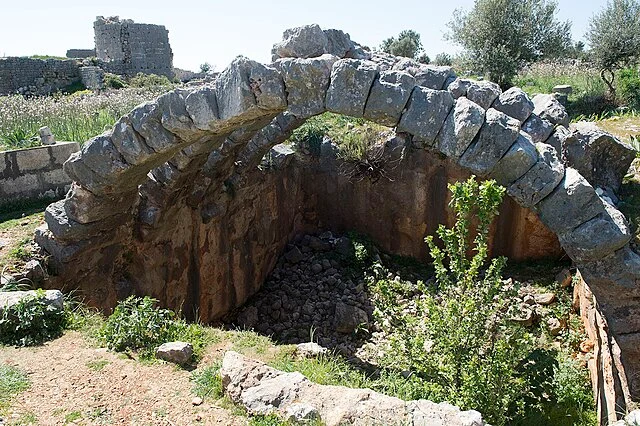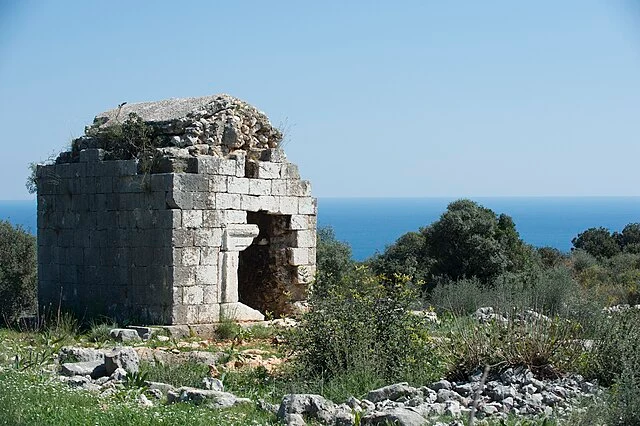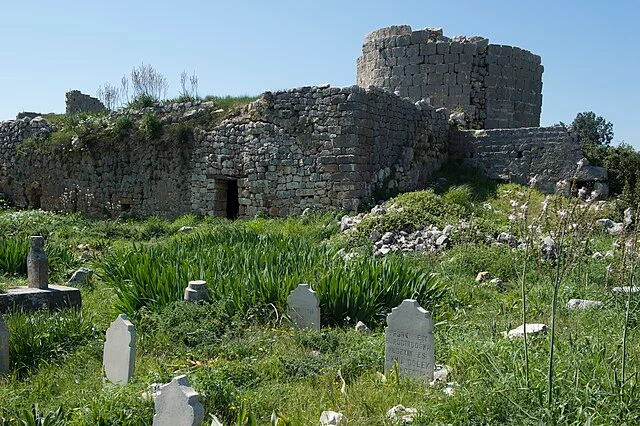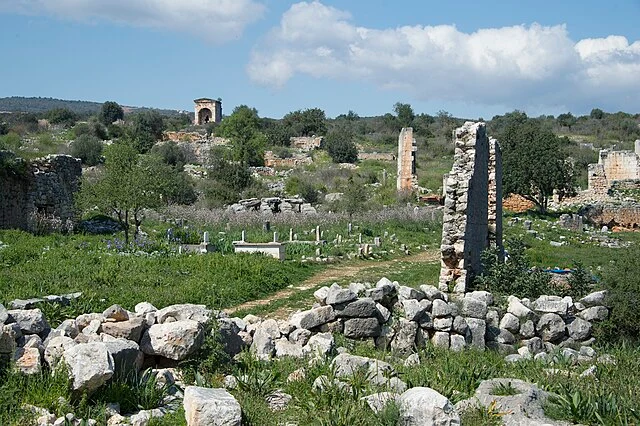Kanlıdivane, located in the Mersin Province of southern Turkey, is an ancient archaeological site with a rich history. It is part of the Olba Kingdom and served as an important religious and cultural center. The site, known for its dramatic sinkhole and well-preserved ruins, provides valuable insights into ancient civilizations that thrived in this region.
Get your dose of History via Email
Historical Overview of Kanlıdivane

Kanlıdivane, originally known as Canytelis, dates back to the 3rd century BC. The settlement was established during the Hellenistic period and later flourished under Roman and Byzantine rule. The site is centered around a large sinkhole, which played a significant role in the town’s religious and social life.
During the Roman period, Kanlıdivane became a prominent city within the Olba Kingdom, which controlled the region. The Olba Kingdom was a semi-independent state, ruled by a theocratic dynasty that blended Greek and local cultures. Kanlıdivane served as a religious center, with the sinkhole likely used for ritual purposes.
The city continued to be important during the Byzantine period, from the 4th to 7th centuries AD. The Byzantines expanded the city, adding churches and other religious structures. However, by the 7th century AD, the city began to decline, likely due to the Arab invasions and changing political dynamics in the region.
The Sinkhole of Kanlıdivane
The most striking feature of Kanlıdivane is the massive sinkhole at its center, which measures about 130 meters in diameter and 60 meters deep. This natural formation significantly influenced the development of the settlement. The sinkhole’s walls are steep, and various structures are built around and within it.
According to some historical sources, the sinkhole was used as a place of execution during the Roman period. Criminals and captives were allegedly thrown into the sinkhole, giving the site its name, which means “Bloody Madmen” in Turkish. However, this claim remains a subject of debate among historians.
The sinkhole also served religious purposes. Archaeological evidence suggests that rituals, including sacrifices, may have been performed here. Inscriptions and carvings on the walls of the sinkhole further indicate its importance to the local population.
Architectural and Archaeological Features
Kanlıdivane contains several well-preserved structures that offer insights into the architectural styles of the Hellenistic, Roman, and Byzantine periods. Key features include temples, churches, necropolises, and cisterns.
Temples and Religious Structures

The site includes the remains of a Hellenistic temple, dedicated to Zeus Olbios, the chief deity of the Olba Kingdom. The temple, built around the 2nd century BC, is a prime example of the blending of Greek and local architectural styles. It features a rectangular plan with columns and an altar, typical of Hellenistic temples in the region.
In the Byzantine period, several churches were constructed at Kanlıdivane, reflecting the city’s continued religious significance. The largest of these is a basilica, which features three naves and a central apse. The churches are built with large, carefully cut stones, and some contain remnants of mosaics, indicating the wealth and importance of the community.
Necropolises

Kanlıdivane is surrounded by necropolises, or burial grounds, which provide valuable information about the funerary practices of the time. The necropolises contain rock-cut tombs, sarcophagi, and funerary inscriptions. Many of the tombs are elaborately decorated, with carvings of mythological scenes and figures. These decorations reflect the beliefs and customs of the people who lived in Kanlıdivane.
Water Management Systems
The site also contains an advanced system of cisterns and channels, which provided water to the inhabitants. The cisterns are carved into the rock and lined with waterproof plaster, ensuring a steady water supply even during dry periods. This system highlights the ingenuity of the city’s engineers and the importance of water management in the arid climate of the region.
Kanlıdivane’s Decline And Legacy

By the 7th century AD, Kanlıdivane began to decline, likely due to external pressures such as the Arab invasions. The city’s strategic location made it vulnerable to attack, and its population gradually diminished. Eventually, the site was abandoned and fell into ruin.
Today, Kanlıdivane is an important archaeological site that offers a glimpse into the ancient civilizations of southern Turkey. Its well-preserved ruins, combined with the dramatic sinkhole, make it a unique and valuable site for historians and archaeologists. The site has been excavated and studied extensively, revealing much about the region’s history, culture, and religious practices.
Kanlıdivane remains a testament to the rich cultural heritage of the ancient Mediterranean world. It continues to attract researchers and visitors, who seek to understand the complexities of this once-thriving city.
Source:

